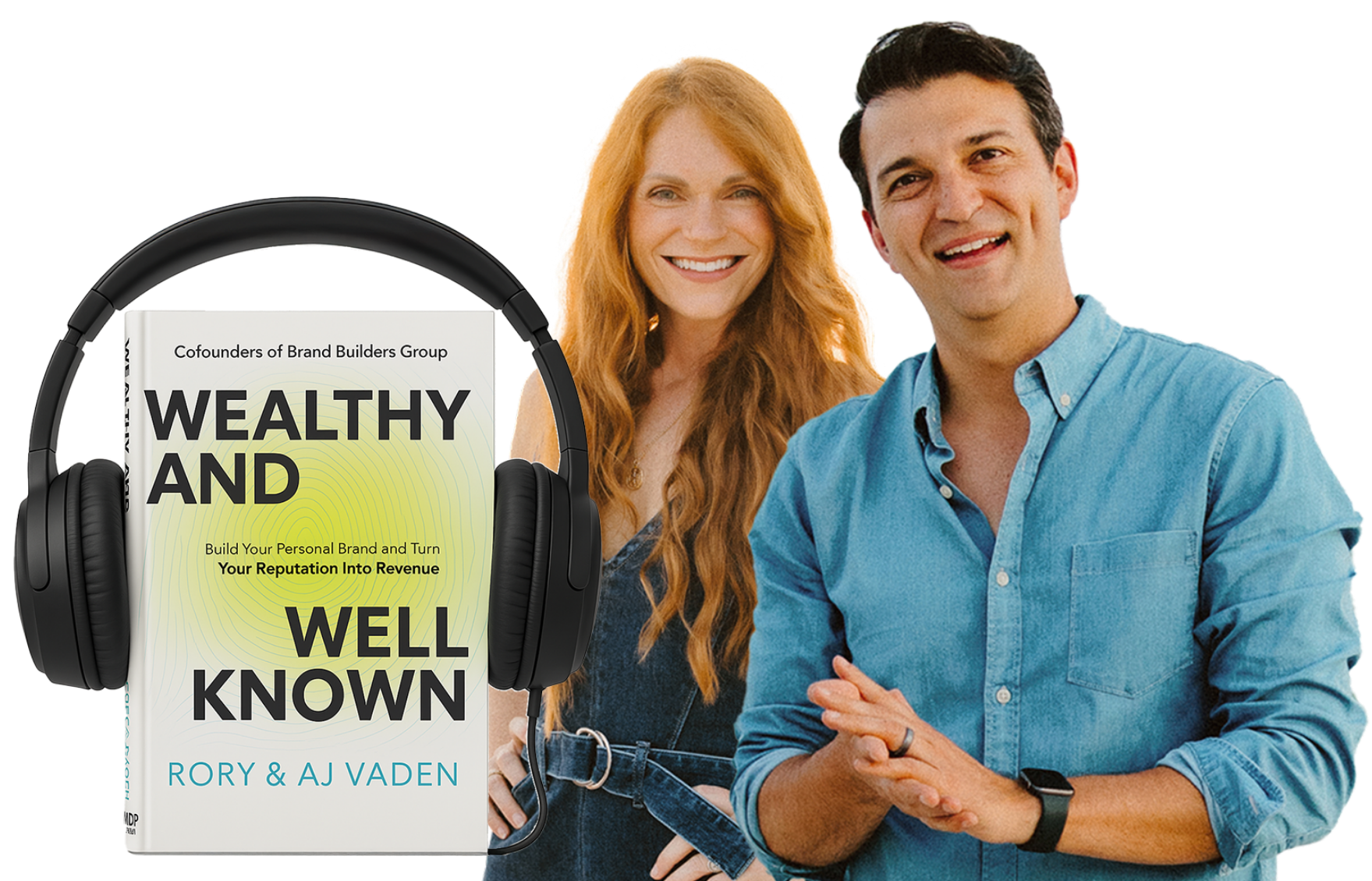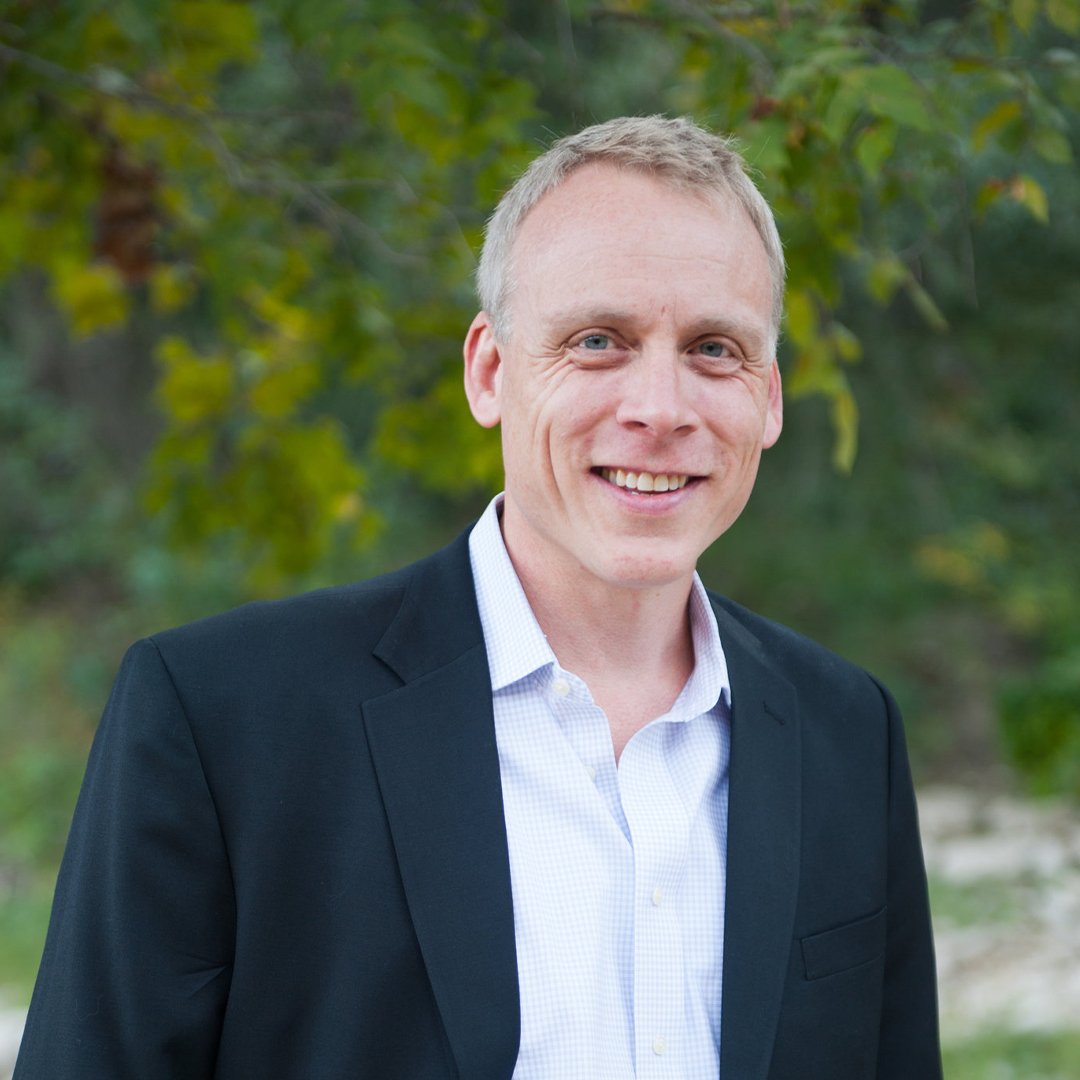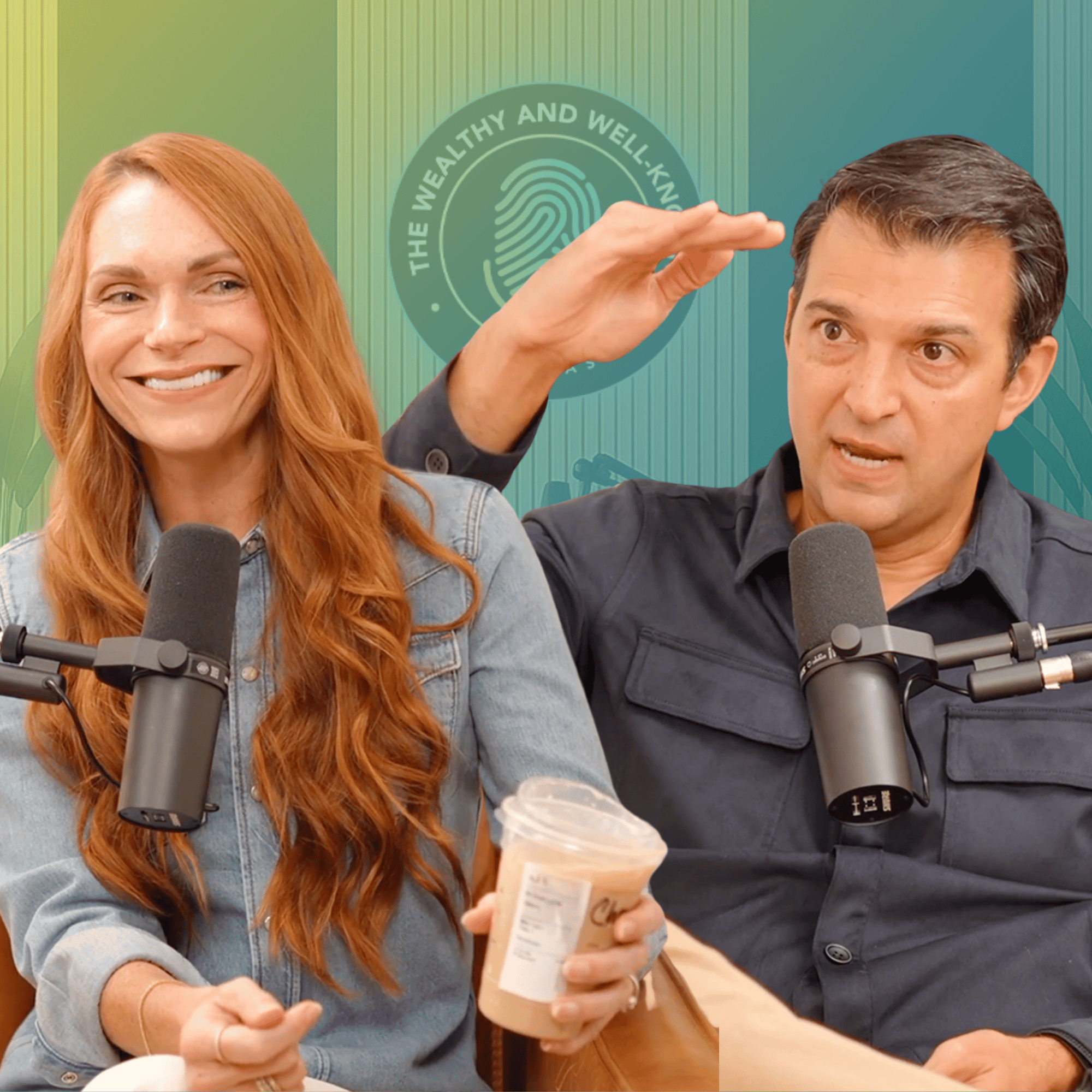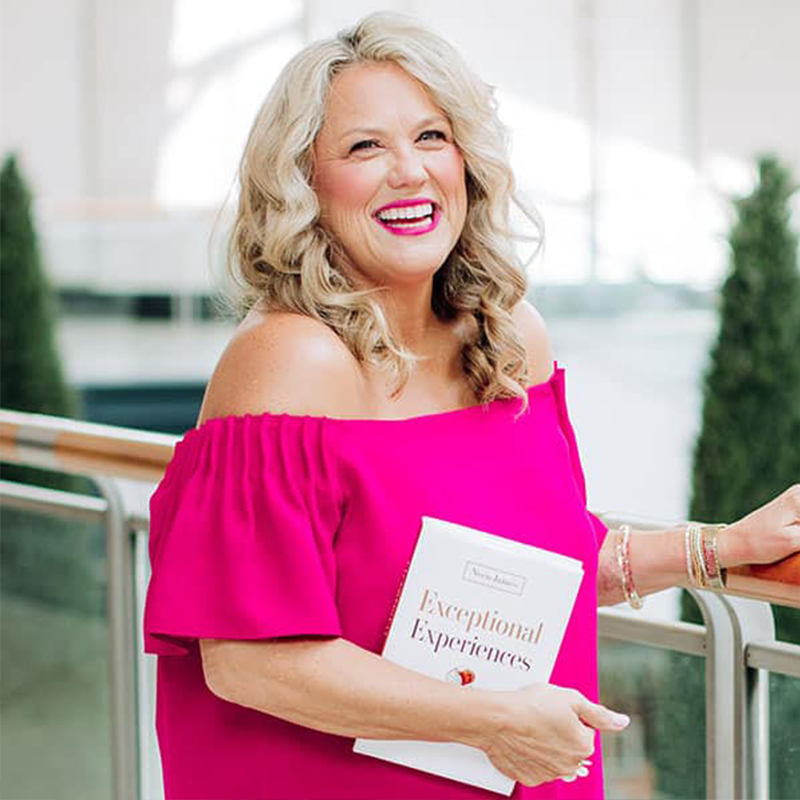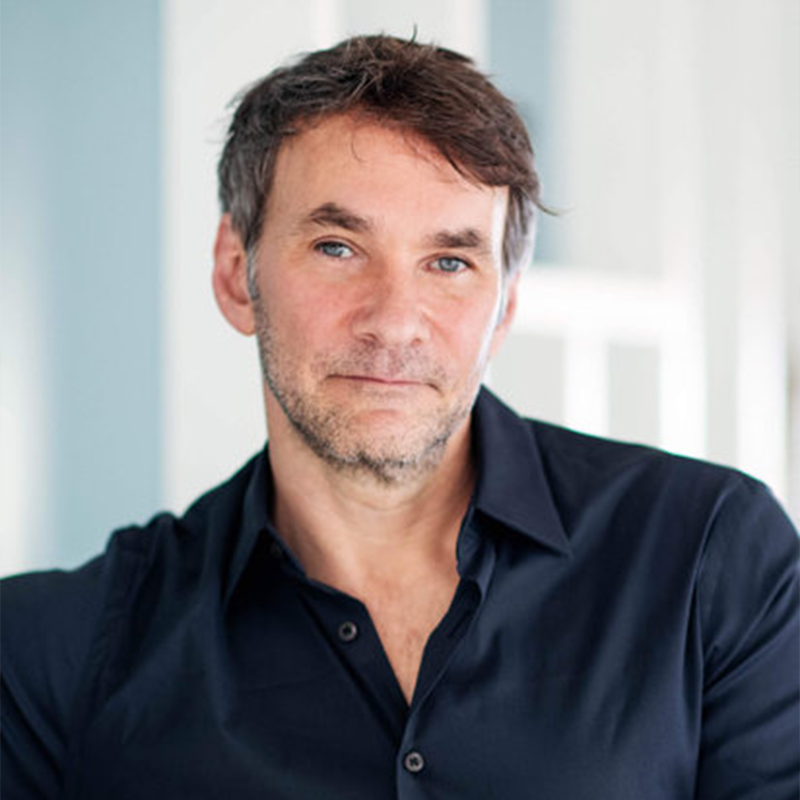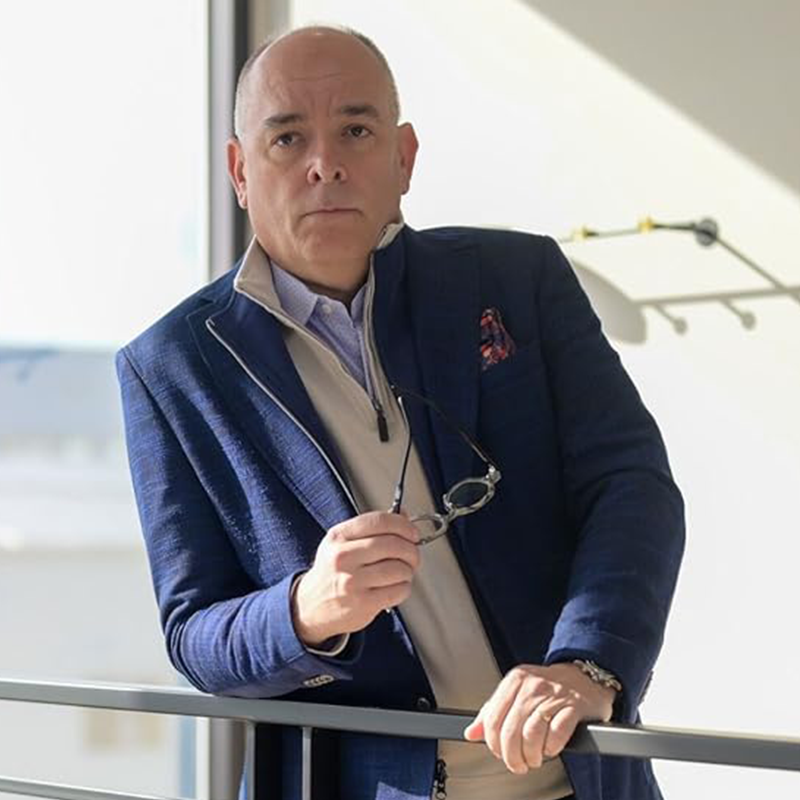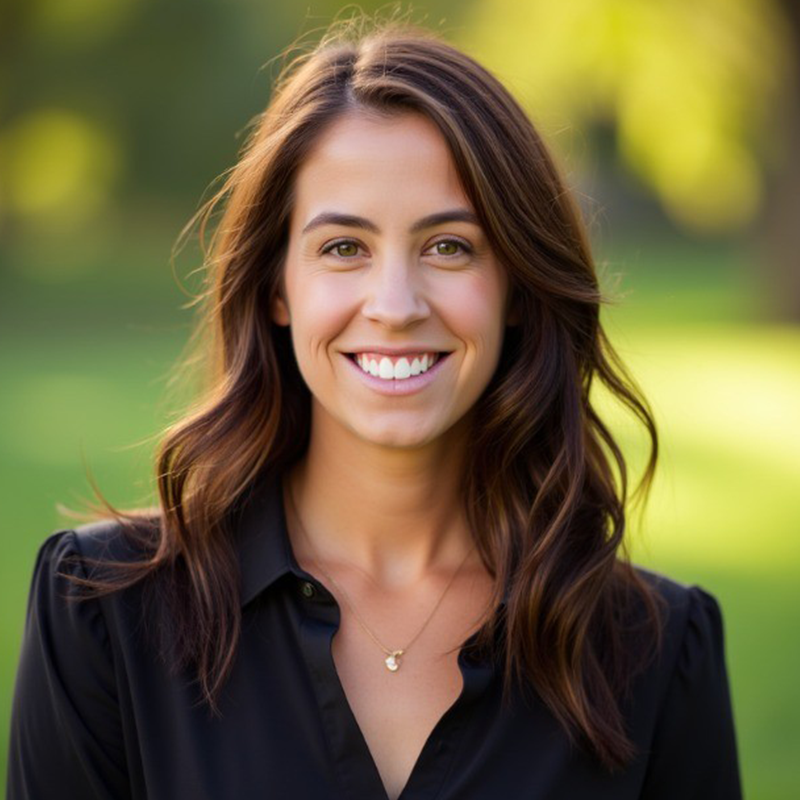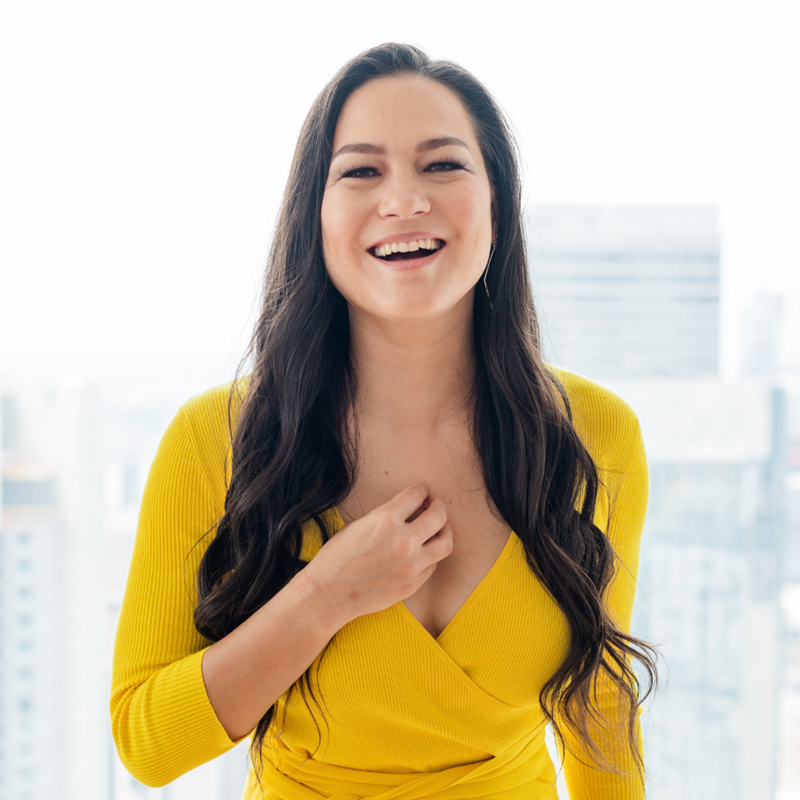Throughout the course of my life, I just had been in my career. I get so inspired by the fact that I get to be friends with people that I admire, that I look up to people that I learned from the people whose books that I read. And Jay Papasan is one of these people and he is truly multidimensional. Him and his wife as you’re about to learn. And I think he just has an extraordinary curiosity and an extraordinary drive for helping people and wanting to serve people. So him and Gary Keller coauthored a book called the one thing which you probably avert, have you seen it everywhere? Which has sold 1.3 million copies worldwide. Now this isn’t like a book that was like published 25 years ago. Like this isn’t a couple of years and it’s every single week. 2000 units, 2000 units, 2000 units. Like, you know, I see it.
It was actually number one on the Wall Street Journal Bestseller list. It’s been translated to 30 different languages already. And Jay’s wife, Wendy, they do some nonprofit stuff with a group called heroes for children. They also have a large team at Keller Williams. So they sold about 300 homes last year and then j was managing like the whole, he’s in charge of learning now for all of Keller Williams. And it used to just be kind of like publishing and doing their books. Now he’s over all their learning. And they have, I don’t even know how many, but last I heard it was like 125,000 agents. So it’s, it’s a monster thing and we were able to peel off some of this time today. So Jay, buddy, thanks for making time for a year old pal, Rory.
Oh, I’m so happy to get to chat with you, man. It’s just, I just woke up today excited.
So I, I, I appreciate that. And I, and I had to tell you like there are certain levels of bestseller, right? There’s like, okay, I was an Amazon bestseller for a couple hours in the subcategory. Then there’s like, you know, I was on the USA today or something and national bestseller list and there’s New York Times for like a week or two. Then there’s, then there are the books, like the one thing that sell 1.3 million copies, like in a few years. How do you sell a million copies of a book? Like what are just in your head, I know you’ve been in publishing a long time, like what are all the different components that you kind of think of to create something at that scale?
Well, I’ve been really fortunate when I was still a, an editorial assistant at Harper Collins back in the 90s. One of the first books I got to work on was a book called body for life by Bill Phillips. And that was a multimillion copy of bestseller in the fitness category. And at the time, like I wasn’t into weight lifting. I mean, so I just thought it was a chore. I had no appreciation at the time. But you learned some things. The first book I wrote with Gary Keller, the millionaire real estate agent and sold over a million copies and I think we’ll actually be cracking. We’re actually at 1.7 million copies for the, we’re heading towards two and it’s 1.7. So that’s the, that so yeah, like as fast as we’re able to get your bio off the internet, you’re selling hundreds of thousands of copies, you just tell it.
You just told me, hey, I need to update my bio on the Internet. So that was, but we the book has done three books, you know, that have sold a million copies that I’ve gotten to be a partner on as an editor and then a coauthor twice. So I think one, there is a measure of luck. I think there’s also a lot of those, if they’re not driven by personality, and I’ll tell you, you look at someone like Rachel Hollis, she is got a, one of those personalities and her husband, they have mass appeal and that, and they’re generating good content. And that’s a massive accelerator. That’s not the game. Gary and I have played big and nor was it bill Phillips, they were brand based so I can talk to the brand, not the personality driven. Is that cool? I like that. So you get a little luck in terms of the timing.
All three of those books showed up at a time where there was a massive people who needed something, a solution and there was not a solution for it. You know, weight loss has always been their fat burning. What Bill Phillips did is he said, you don’t have to do cardio to burn fat. Actually weight lifting is better. And so he changed the way people thought about that exercise group. And so he introduced a new idea at the right time that proved to be true with Maine. Our real estate agent, Gary gets all the credit right? I showed up right about the time we were riding, not conceiving, but he looked up and he said, here is an industry of over a million real estate agents. They don’t want to be seen as salespeople. They want to become business people. And so that book was about the journey and it showed up at the right time.
And all of our competitors use it. They teach it, they just call it the red book. It’s got its own brand now. And then the one thing showed up at a time, I think we’re a technology, we’ve seen the delta technology is, is actually changing faster than we humans can adapt. And so when we look at all the opportunities and all the things we have to do and all the things we could do, everybody was kind of in a state of overwhelm. And I think the one thing is kind of like a laser that helps people cut through that and get clear about what they need to be doing with all the noise. So I think all three books benefited from timing and a simple new approach. And I think those are the key ingredients. If you don’t have them, you’re not, you’re not building on the right foundation. Interesting. So timing, all that last controllable and a new approach. And, and you know, the other book that came out, so procrastinate on purpose came out around the same time. Which has sold like 1.7 total copies itself. And then really well,
Well it’s interesting, the Ted talk did really well. The Ted talk has millions of views. The book, the book hasn’t sold as well as take the stairs dead. But essential ism also came out about that time and it has sold very well. And so like the theme in terms of that, that approach of just like really like narrowing it down. How do you, like I really, I love that that’s a really keen insight that I’ve never quite heard someone share.
How do you do that? Like
Is it, is it more of just like stepping back and going, okay, what’s happening in the world? What are, what are, what do people currently, like what’s their current modus operandi? And then what, what is it really that they’re missing? And then just kinda like zeroing in on that. Is that, is that kind of the, you know, cause like it’s Kinda hard to men, a manufacturer, a new approach. Like the key, as you said, it proved to be true. Bill Phillips introduced a new idea that proved to be true.
So have you been able to do that intentionally? You’re actually guiding me here. So I’m going to say let’s, let’s edit ourselves instead of a new idea. Let’s say a new approach because I actually think if you looked at all of those books, everything that was in them was already in the world. It was just packaged in a new way that people could digest. And actually sometimes the truth has been there in front of us all the time until someone shows it to us in a new way and we’re able then to do it. So all three of those books presented an approach to doing something that people wanted to do that they could actually do. It was simple enough that they could follow and the results actually showed up after. So when we designed books and we’ve been lucky, we’ve written 10, 11, depending on if you want to count one that was self-published and two of them are then million copy best sellers.
So I think if we get a third one then I’ll say that we’re really firmly onto something. We might just be still in the lucky category. I think that there’s two kinds of books in this business. Self-Help. there is kind of the aspirational, they’re books that people I want what those people have and those personality driven books that that can create a high need. I remember we came out at the same time that when its Paltrow came out with her book on beauty and Diet and it’s like we’re competing on the same list with her. I mean a lot of people want what she has in those categories, right? And so personality driven, also outcome driven. I look up and say, what’s a problem we can solve? I’ve believed that people, we all know this. People are more likely to take action to remove pain right then to pursue pleasure on the grand scale.
I think reed Hastings has a quote that I always butcher. But basically as a business person, you always want to be selling aspirin, not violence. So that’s kind of a mantra that we use. What problem are we solving and is there a strong felt need? Like when you look at Diet Dave Ramsey debt, those are like people have a bad body self-image. If they are in debt, they have a strong desire to fix that problem. So how much depth is there in that felt need? And so if we identify a problem that we think we know, the idea for our approach has been to go and say, all right, let’s go personal branding. Who are the 20, 30 people who know more about this topic than anyone else? So we interview you, we interview your wife, we interview all these people, and then our job is to ask what do they all have in common?
And in my experience, this is if there’s a name for this kind of research, right? It always escapes me cause I’m a writer first researcher second. But we’re looking for the pattern of commonality with all of those people have in common often is kind of the secret sauce and it because 30 people have it in common. It’s probably something the average person could choose to do. If I just interview you about personal branding, there may be stuff about your, your amazing delivery or your amazing ability to do presentations that I will never be able to do. But if I find 30 of you, there may be a pattern that I now can do. And so we’re looking for that pattern. We call it a model. Some people would call it a best as a collection of best practices and if you can then convey that to people in a package they can digest, I think that’s a really good recipe for how to business books.
Yeah. Well I love that. I, I think you know, brand builders and in our, when we, when we start working with somebody from ground one and they say, what’s the first step in a personal brand? Like where do you start? We say all the time, the genesis of a personal brand is identifying what problem you solved in one word. Like what is the problem? And even as you said that, I’ll just reflect like that coming back to me it was like, yeah, that is step one is noticing the problem, which is like every entrepreneurial adventure, right? Like you noticed like you know, there’s this problem that women have in terms of how they feel and then you create spanx and like boom, you know, are you, you, you, you notice something. And then, and then you kind of start to go ri what, what do people have in common who do this well that maybe everyone’s not seeing? And I think that’s really cool too about you said all of those books, all of these ideas already existed in the world, but packaging, packaging them up and presenting them in a way that like resonates like with the world at that time. I love that. I’ve really loved that.
I think back to the last time you saw the dead poets society, you know where he makes them most stand on their desk and look around the room. It’s that you’re giving people a new perspective on something they probably already know, but because you’ve now served it to them and a new way, it’s actually digestible. And I’ll go back to that word approach that I edited myself. I believe really firmly their idea books, right? I think that Malcolm Gladwell has written the best idea books in the world. I mean some of them changed the way I viewed the world. That’s a category of book for sure. We’re trying to write books that people go do something based on. So when I use the word approach, like if you give someone a really complicated plan, I’m sorry, they might be able to do it for a little while.
In my experience, it falls apart and sometimes the more complex it looks, the sexier it is to sell that people can actually live in simplicity, not complexity. So your approach, how you tell them to do it, how you coach them through it. Can they remember the steps on their own? And it needs to be kind of stupid simple. When I looked at pretty much about, I guess I want to say about eight months into our, the one thing journey maybe it was, maybe it was 18, I can’t remember the, it’s probably more likely 18 who does anything at eight months. Okay. So there we go. We did an analysis of all the Amazon reviews. We were trying to get a sense of what did we solve the right problem and what is it that people actually love about the book. And what was really funny when we did it, he works like we did like a Web, you know, word clouds, the one star reviews and the five star reviews. The biggest word was simple. So the thing that we really strove to do was make it simple. Was it what appealed to the vast majority of people? But then it was also the thing that turned the one-star people off. Oh, it’s just one idea. And they knocked the book, but you’re not going to make everybody happy. But that 80%, that’s the five star reviews. That’s the overriding theme. It was a simple approach. And for overwhelm, it really makes sense to give people a simple approach.
Yeah, that’s fascinating. So it’s almost like mission accomplished. Even though the one star reviews in like it, they all got it. Like they all had the same experience.
No, this don’t spend too much time on the ones who are reviews. They should be, they should be educational, but you’re not going to make everybody happy. So I think this part of it sort of
Like the ideation of a book is really, really fascinating of, of just kind of going, okay, so it doesn’t have to be totally like groundbreaking original per se. It just has to solve a problem and it has to be a new perspective on something they probably already know of which the answer can be both, you know, known by a lot of people, which is where you might find it, but also very, very simple and presented simply. So I, I, I, I, I’ll, I love that. Is there anything else on the writing process, both because of your experience as a writer but also as an editor and managing a team? If somebody is sitting down you know, like a lot of our clients are sort of working on their first book and they’re trying to get noticed by a literary agent or a publisher. And it’s Kinda like that, oh my gosh, how do I take my entire life and like write this first book. Anything else that you think is helpful for people in like, you know, filtering down which ideas they should put into their book and, and you know, the, the creative part of the process.
I’ve shared this, I don’t know if it works for everyone. But when you’re working with a business, people that want to be authors, I’ve found a helpful technique is cause a lot of them are not actually authors, right? They have the ideas, they’re going to have to work with someone. But most of them can go do a presentation. So my advice is why don’t you build your ideas and stories into basically a PowerPoint format and then go teach that every single month teaching every week if you can. And basically you’re rehearsing, you know, your future keynote for the book again and again and again. And if you could teach a half day class, go teach a half day class, cause that allows you to go deeper and deeper and deeper. And it’s not all about the exercises, right? Cause it’s hard to replicate an exercise in a book, but you start to see that story that you thought was so kick ass.
Like people are still on their phones in the room. That story that you didn’t, I think it was so strong. Everybody’s like paying attention. It’s Kinda like some people use blogs to test material. I actually like the immediacy of being in the room with people. As an author, if you’re gonna be successful, you’ve got to master that skill anyway. And you teach the book and you find out really quickly what people do and don’t respond to. You get to test things really quickly without all the headache of writing it and unwrapping it. And what’s really beautiful is some, he’s going to come out of the audience and go, this reminded me of my grandfather, or this reminds me of So-and-so. And you get stories that you would’ve never found in a Google search or any bibliography or library that immediately becomes that thing. That’s actually quite a unique story that you get to bring to your book. So I tell people, go teach it for five or six months and then come back and talk to me.
I love that one. One of the most memorable parts of procrastinating on purpose. It’s this 30 x rule and that’s my favorite thing all the time. So dude, yeah, on an airplane, like I don’t even, I wish I knew the guy’s name, like I can’t even give the guy credit. But like some dudes sit next to me on the airplane, he’s like, yeah, my college professor one time explained it this way and I was just like, that is, that is gold. And it’s exactly what you’re talking about is, is that, you know, a lot of that stuff, it’s like, I think, I think there’s a big pressure on authors to feel like they have to be the creators of great ideas and it’s like really we can just be the conduit of great ideas.
Exhibit is curation. I think that we have to give credit. I think if you’re in the business of taking credit for other people’s ideas, that will bite you eventually. Right? Especially the bigger you get faster it happens. So you can curate ideas. Just give people credit. Like I’ve had those stories like the guy next to me on the airport that I can’t credit, but I can at least say, this isn’t, this isn’t my original idea, but I heard it, I knew it was valuable and therefore I’m sharing it. Yeah. The whole idea of like a new idea versus a new approach. I mean there’s some Shakespeare quote like there’s nothing new under the sun. Right? I mean there is some truth to that that almost everything that we read, the number one bestseller charts right. There is something there that is being regurgitated and served up for today’s audience that we, we were familiar with before.
Yeah. So I guess that that’s like the, that’s the essence of the theme of what you’re talking about. It’s not new ideas. It’s a new approach. It’s like a new reorg. It’s like a new organization of the ideas that are out there. I love that
Done David Allen. Right? People have been talking about organizing ourselves to be more effective for ever. I mean, what I took away from that book was a new way to manage thoughts in my head. The new way to file things in a fund. Oh drawer. It was a new approach to things I was already doing that was just a lot better and it was also kind of simple.
Gosh, that’s really, really good. So, okay, I want to shift now to the promotional part. So you know, like it’s that whole thing. It’s like, it’s not called a, I think Robert Kiyosaki was the one who said, it’s not called New York Times best writing author. It’s New York Times bestselling author, which I do. I do agree with, but I, I really love that we spent our time so far talking about the integrity of the ideas and I, and I think that is often overlooked. I think unfortunately because there is such an opportunity to have a big platform for social media, whatever, you know, you can create a bestseller with a lot of platform and not a lot of great sort of content. But the promotion part, like is it 50, 50 or like w w if you had to go like the, the content or the principles in the book versus the promotion of it, like what would you, how would you do that balance?
Okay. You just made me think of a really weird, there’s a short story by Amy Balloon called love is not a pie and it’s like literally about a polyamorous relationship that a child discovers and the mother says love is not a pie. If I give you a slice, it’s not like I have less to give to the other person. Hopefully you know where I’m going. I think you’re all in on creating great content and you have to be, it’s like it’s a hundred to a hundred. Right? I think when people just send a great idea out in the world and are not fully prepared to make it their full time job to support that baby they’re fooling themselves. They’re also, they’re not getting that, that, that idea child every opportunity it has to flourish. So it doesn’t have to be like a full time, 40 hour a week job, but it needs to be a preoccupation that you are regularly attacking it.
So we designed a launch program. We have at the time, I think we had about a hundred and we had maybe even less than a hundred thousand agents when we launched the book. We have 170,000 now, but we knew we had a platform, a very big platform, but we thought it would take about 40,000 sales in the first month to make number one. And I remember I got a plan it was going to sell 40,000. Right. what do people get when they buy one copy? What do they get when they buy 10? What do they get when they buy 500 and my publisher, Ray Bard, brilliant guy said, and what are they going to say by 5,000? What do they get it? They buy 10,000. I wasn’t thinking big enough. We’ve made a couple of those sales. They’re very rare. But if we hadn’t thought the problem through, we would’ve never made them.
So you look up and you have a plan for how we market to all of these segments. We had a plan for how we would market the book to the bookstores. Like this is why you want to put it face out. And we had a budget for help and then did that. I remember Gary saying, well, you’ve shown me a plan to sell 40,000 bucks, don’t you? The whole book is about aim high, right? So we got to overshoot the mark. So he made me get back in January before April launch and create a plan to sell 100,000 copies. And so we implemented that plan and 44,000. Wow. So if we had implemented the 40,000 plan, at that same percentage, we might have sold 18 or something. Right. So first lesson is you make a plan much bigger than your goal. Because a lot of things are not going to work.
Sometimes I’m distributors, they shipments get lost, there’s snow storms and books don’t show up in bookstores. And I’ve had every manner of collect catastrophe happen. So we had that initial period where we went on the road, I think look 36 times that year. Which was a lot for a guy with two kids. I tried to space them out, I’ll do like two back to back here to back to back here and never be gone on a weekend. And the next year I did 24. The next year I did 18. The next year I said Yes to 12. And that’s kind of where I’ve been staying at. I’ll say yes about 12 times. Cause I do have kids as to when I hang out with me. So I did not want to also become a professional speaker. But I remember we launched the book we were selling in that, you know, 2000 a week and then it was April when we launched in about April the next year.
I remember around Christmas the sales started declining and we’re like, we’re watching it, we’re watching it, we’re watching it, I’m doing as many podcasts and all these things as I can. And the sales keep going down. One point they dropped all the way down to 400 a week and then a year after they started picking up and then kept picking up for almost three straight years. And now we’re back in that 1200 a week kind of range. And it’s kind of, that seems to be 800 to 1600 depending on the week. And what happened and how shipments turned out seems to be where that book is landing. And that’s what a gift. I’ll just say that I’m not, I’m not at all taking it for granted. We did a lot of work though. I think it was two things. Every single week. I set a goal and I have a coach.
He tracks me every single week. I had to do something to promote the book. So I was on a podcast, I did a radio, I did a TV, I did a speaking appearance. So I love things that don’t take me like this. I don’t have to leave my office and my family to talk about my book with you. And you’ve been shared with your network. So podcast is highly leveraged. Every single week I did at least one activity, sometimes more. And I’ve been doing that for six and a half years. So Gary who runs a huge company and he stopped doing any public appearances, I think by August of that year. And he’s only done two interviews since he did Tai Lopez. And last week you did Tim Ferris. That cause that if I put him with a job with salesperson, that’s a poor use of his time. We’re a partnership, but someone’s gotta do it.
So I tried to make sure I managed my time and we were building our email list. We were always interacting with our customers. We have a Hashtag. This is a great tip. Create a unique Hashtag that’s in your book cause people Instagram, they post their favorite books, right? And then follow that and interact with all of those customers. So a lot of my promotional opportunities were kind of ad hoc. I’d see that somebody posted a picture and said, oh, this is our book club book. And it was in some small company in Florida. And that would DM that person say, Hey, would you like me to zoom in or Skype in? And you can do a Q and a. Like, I don’t want to do a speech, but they can ply say you want to play stump the author? I’ll make you look good to your boss.
So you’re winning an advocate inside that company now. And then all those people are like, wow, we actually got to talk to a bestselling author today. Like that’s a, most people will get that. So using that, most authors would never do that. Most authors would never be like, oh yeah, some small company in Florida. Like what? They’re not worth the time to engage with. Well, I did that by the way, and we signed a six figure contract with a fortune five company, which I’m not legally allowed to name like two weeks ago. It all started with me doing an internal only for a very small group said, would you come in and do a book talk? And I went in and I just did a Q and a around time blocking, which is one of our concepts in that it took three and a half years.
Right. But that relationship state, that advocate became a champion, that champion got a promotion and then they started to get to make decisions and then you just see how those dominoes line up. But pretty much I’ll only say yes when someone says, will you come speak or talk? I got invited to Google. They wanted me to talk about investing. I’ll say, I’ll talk about investing if we can talk about it through the framework or the one thing, I’m not a paid speaker. I’m not going just to go to Google. I’m going to promote being single minded about it. So anyway, I just do a bunch of stuff at you, so I’ll shut up. So you can actually make this an interview and not a diet and not a mile. This is great. This is what we want. I mean, just like your, your mindset on this step.
So in terms of the tactical like, okay, if I just had to create a checklist, like okay, let’s say my book is launching whatever sometime this year, what are the things like, okay, so we know speaking, right? Like we know speaking, we know podcasts, we know like going on other people’s podcasts. What else can we do? Like people do columns, right? They get their Forbes column. They do that. I think that actually it can lead to sales. I think it helps them in terms of visibility. It helps him in terms of branding. I think that helps convert sales more than make them. But if you’re strategic in who you’re interviewing having a podcast, having a a blog, having a column and one of those magazines, right? Online magazines, it gives you a platform to reach out to influencers. So I could be, hey Rory I’m trying to write an article.
I don’t do this cause I, I want to write books. I don’t want to write columns that’d be like, Hey, I’ve got a Forbes column this month. I’m talking about personal branding. Can I interview you one? So that’s a win for you, right? You have a business that you’d love to have free promotion, but now I get to talk to you and I’m talking to you and we’re sharing frameworks for books. And this is how like a lot of our partnership, right? Yeah. Frameworks work really well together. Procrastinate on purpose is a great companion book for the one thing. So if it went from my audience and vice versa, and you end up in this collaborative environment where one in 50 right? One in 20 become someone that opens doors for you or makes introduction. So everything, I mean I go to breakfast every, I’m an introvert.
Every Wednesday I have coffee with a stranger. I’ve been doing that for six years. I started doing it when the one thing launched cause I knew if I didn’t do some networking activity I would get burned and my goal was just to add 50 cool people to my network every year that has blossomed into its own platform. How many of them are actually cool? Is it 50 I think because of the way it works. So the first year was the hardest. I just went through my linkedin and started inviting people in Austin and I ended up in front of sales people trying to sell me stuff or whatever. But I showed up with no agenda and I just, Hey, I’m just, I hear that you’re awesome at x each me and if I had something I could share with them I would. And I never had an agenda.
And what happened is I did 50 the first year and quit because it was exhausting from a to meet strangers and the next year or so many of those people referred me talent that I did 79 the next year was 129 wow, that’s a lot of meetings. Yeah, it’s breakfast. I can go up, show up for 30 minutes, get to know someone. And then my coach about three years into it said, how are you staying in touch with them? And I said, well, they’re all extroverts. They call and text and email me. And he asked me like, the tough questions is that are you want to work it? And I said, okay. I came up with a plan and I created a newsletter. And right now I think I’ve got about 450 people on it, but it’s a pretty select group. I filled about eight positions in our various businesses from that network, we have an opportunity I’ve been able to populate some of our events through referrals through that.
But I have an open rate, I think of 45% and I just say, Hey, this is what I’m up to. And that, that actually goes out today. And it’s just a real short half page, three or four bullet points. But it allows me to be in their inbox once a month in a way that I’m bringing value to them. So coming up, just have a plan. Right? It’s not so much what you do, it’s that you do and that you do it strategically in terms of like the airport bookstores and stuff. Yeah. Like the money that you spend there. I mean, can you just like talk a little bit about how that works? Because lots of people want to be in there. I mean that was like my initial dream was walking through the airport and there’s like, oh my gosh, one day. You know, can you just give us a, just like a little high level on how the airport bookstores work?
Yep. Every year that the one thing has been out, we spent on the low end 109,000 on the high end. 195. Wow. So that is all paid placement and the game you’re playing. I made most, there’s very little tracking Hudson’s reports to the bestseller list, so they charge a lot. It’s very rarely makes you money. And I’ve actually, I was just corresponding with James Clear, another bestselling author and cause I coached him a little bit on this and his book sells great. But it didn’t sell well in those bookstores, but he still, what I found that he found is when it was in those bookstores, we got a lot more high paying speaking gigs because the kinds of people who book those and think about those are the people buying books in airport bookstores. So the first year I measured it out, I didn’t do any.
I think I did one paying speaking gig the first year because I was mostly going to our network. I did Cutco knives or something, right? For like $3,000. And you look at that, but I still think we got 50 cents on the dollar back and we asked the question, do we keep doing it? So I kept doing it. That’s a lot of dope. It is a lot of dough. But most people are losing money a lot more than that. Cause you paid to be in the bookstore. You only make money when they sell them. So your book has to sell or they won’t stock it or take your money. And if it sells enough, the virtuous cycle was for about three years. We spent substantial time on the Hudson’s bestseller list. And when you get on the Hudson speced seller list, you get free face out placement on their top 10.
And that goes the paid 200 stores where you can buy space on a table. Now you’re in 720 and it’s free. And that flips the whole cycle. And that alone, Barnes and noble actually is a, always been a moneymaking and books a million. So books-a-million Barnes and noble, I get a return. And when you’re a bestseller at Hudson’s, it paid for the entire spent. So for about three and a half years, we actually made money when you net it all out. And then other times we’ve almost broken even or just been a little bit one way or the other. Just on Hudson, you’re talking about Hudson’s is a big difference maker. Which is it reports to the best seller list. And if you get on their bestseller list, you get tons of free placement. Yeah. OK. So that so, so, so then it’s Kinda like, you’re not making money on the book, but you are from speaking.
And then if you can make their best seller list than that, they give you a lot more exposure, additional exposure. You said 700 stores, if you said 770 or 720 stores, I don’t know the exact figure. I’m crazy. But for people being pro like my deal, the deal Gary and I have with Ray Bard is we’re almost a coke publishing agreement. So he, it’s a very different model, right? And there are a few other companies that do it. But you can always negotiate this. You, we had the ability to set the co-op marketing budget because we were going to pay for it and my conditions on that where I want to know what my rate of return us. So I had to get regular reporting and sometimes they literally had to call the stores and say, how many did you sell? Because a lot of them don’t report electronically.
It’s blind. And we got a sense of what our cost per sale was and we were able to back out our margin. So I wanted to do it like a business person. I didn’t want to do it like someone just buying brand, which is what most of them are doing. They’re just trying to get brand exposure and it’s very valuable that perception of those books. Wow, I saw your book in an airport. They assume you’re selling millions. Right? Most people aren’t inside knowing how few books most books sell, but that creates massive brand recognition and they don’t realize that you’re not settling though, yet you’re millions
On the inside.
No, those, those accounts can be very valuable. And so I would just say work it out with your publisher. Say, especially for the first year when I’m really trying to build my platform, I would like the ability to have consultation and the ability to increase your co-op spend. There’s no one that can determine whether a Hudson’s will take your money or any of those parodies or those stores. Right. But then you at least have the ability to invest in that brand building. But as a business person, you also want to see the results if possible. Because like I said, it’s, you have to monitor it.
Yeah. And so usually that that return on that investment. So, so when you talk about the investing money, like not the free stuff with the investing, it’s like Facebook ads, bookstores, those are like some of the big ones. Then basically the return on that is usually the more like paid speaking or consulting, you know, and then any royalties of course, but that’s not going to really make the dent. Probably
The, the big money in books unless you sell many, many, many copies is always, and that book helps you convert more customers to your high margin business. I have yet to see anyone who spends money on Facebook advertising for a book that actually nets money from that. Yup. Well margins are too small.
Yeah. Yeah. It’s, it’s, it’s a, it’s a really, really interesting, interesting game. Well Jay, this has been so helpful and so insightful and just like, I think informative and a lot of people don’t even understand how bookstores work in the airports and stuff. And I, we appreciate you so much. Where do you want people to go to follow? You learn about the one thing, like staying connected with what you guys are up to.
I would love it if they’d go to the one thing.com and that’s what the number one everything about our business, our training is there, and they can find my Instagram and stuff and they can always DM me. I’m always, I try to monitor those accounts personally. Because I do the one thing, I don’t do that daily, but I do it very regularly so they won’t sit in my Twitter, you know, Twitter DM thing for a month, but it might take me a week or so to get back. But I’m happy to interact and I’d love to find out that people are living the book.
Yeah, that is awesome. Well you guys, you guys have been amazing and this is so cool to just get a little bit of a, you know, insight into what goes on in the mind of real mega best sellers. So thank you for sharing so generously and for just being accessible for an introvert. You’re, you’re actually an exceptionally accessible guy and you know, I just, I really appreciate you and appreciate all that you’ve done for us, my friend.
Thank you so much.

